Jongmyo Shrine In Seoul
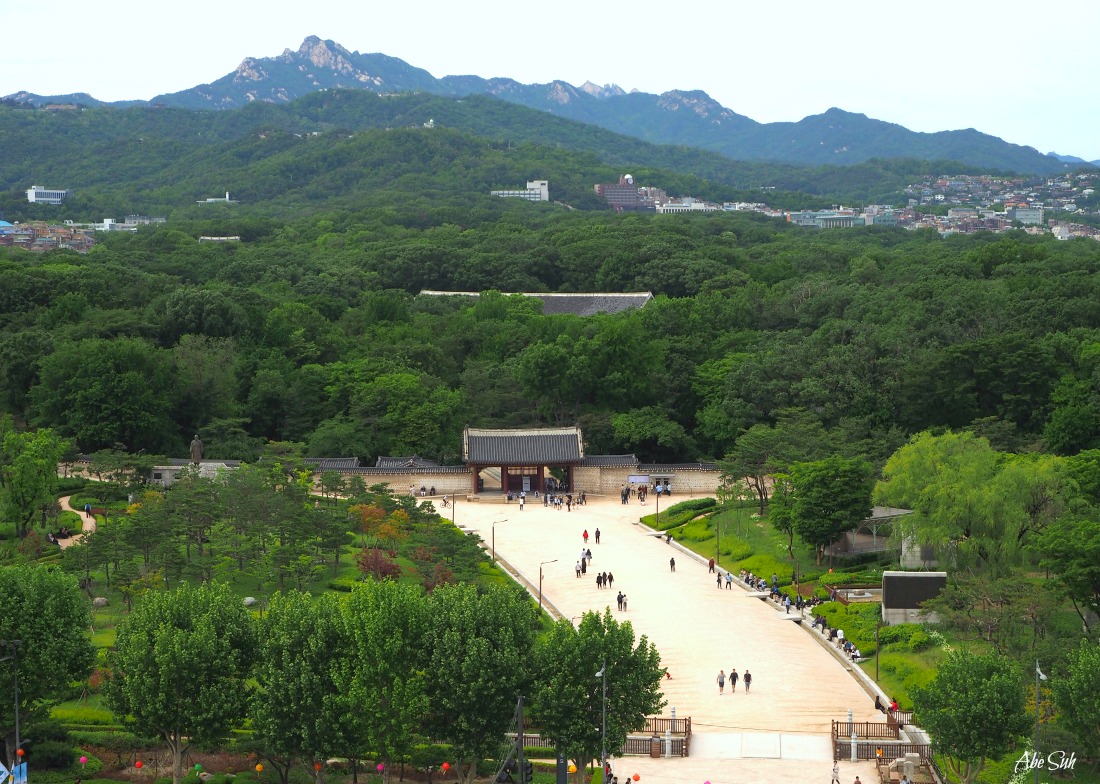 Jongmyo Shrine in Seoul [Jong-ro 3ga]
Jongmyo Shrine in Seoul [Jong-ro 3ga]confucian seoul jongmyo shrine in Seoul
Spiritual Jongmyo Shrine in Seoul
Jongmyo Shrine is a famous historic site located in a very accessible but busy area in Seoul. Among the attractions tourists, Jongmyo is a must-visit site among many in this capital city.
It is also a famous educational site among younger Korean generation. They learn about the Confucian culture and practices of the past royal families.
The construction of Jongmyo Shrine in Seoul was one of King Taejo’s plans as he started building the Joseon Dynasty in 1392.
In his manifesto, King Taejo decreed that all kings and queens who died should be honored with the true Confucian ceremony and then should be offered with a series of ancestral rites.
I have just joined a guided tour of this UNESCO heritage and found my
experience very educational and most of all quite interesting.
For
example, the Korean tour guide who spoke in English explained that
Koreans before were not allowed to cut or shave off their hair because
their bodies do not belong to them but their parents and ancestors.
Due to this belief, their bodies should be buried in the ground and not to be cremated.
TRIVIA: Foreigners, long ago, had difficulty in distinguishing between a boy and a girl because they have grown long ponytails!
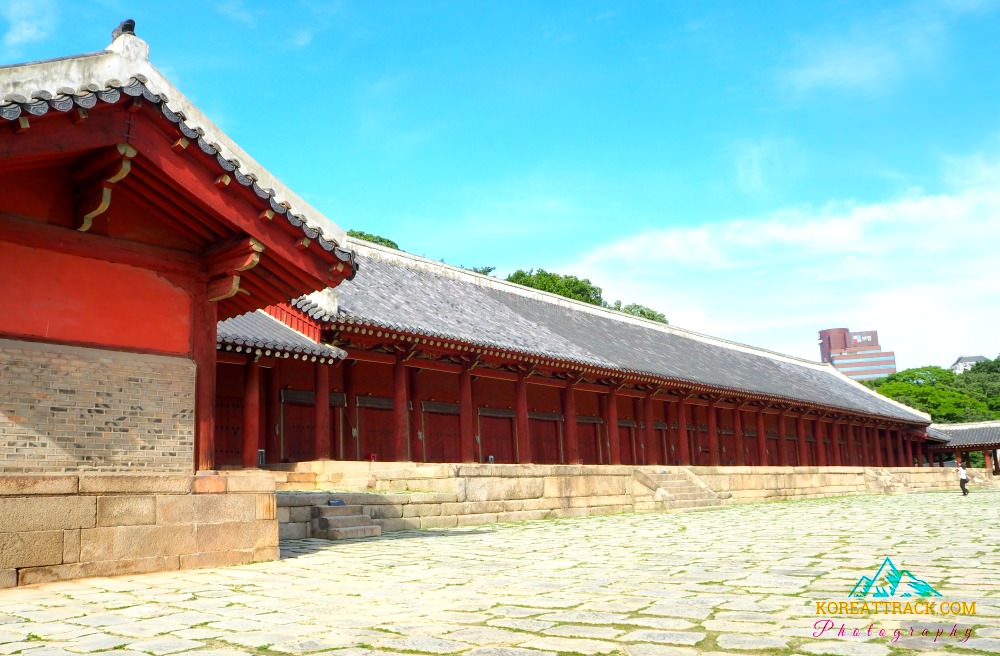 Jeongjeon Hall - main location of the spirits
Jeongjeon Hall - main location of the spiritsconfucian ceremonies
The ceremonies were performed five times a year, with a special ceremony on the winter solstice, but basically one for each season only.
These ceremonies were conducted by the ruling king to pay his respects to those who passed away before him – such as bowing profusely and describing all the issues of the state to their spirit tablets.
The Spirit Tablets are the wooden blocks wherein the deceased royal spirits are believed to reside.
Confucian religion followers believe that the spirits of the royals are accessible as tablets are preserved inside the buildings (see the photo). The collection of the Spirit Tablets are thought to be the largest one in Asia. These buildings are the one(s) with the so-called ‘red-gates.’
One of these constructions was the Jeongjeon, the first one to be built. Because the Joseon dynasty was more extended, another building was constructed – Yongnyeonjeon—to accommodate the other dead royals’ spirits
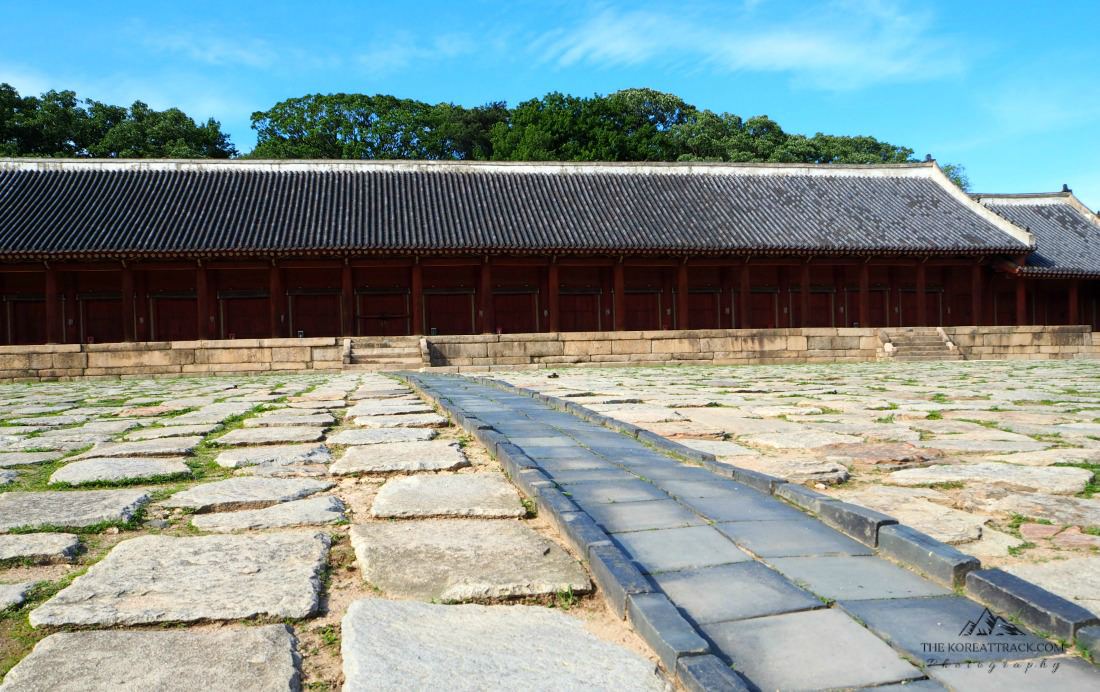 Seoul Jongmyo Shrine
Seoul Jongmyo ShrineEven though the courtyards are accessible; the buildings are closed all year round except only during the first Sunday in May. During this day, Jongmyo Daeje, a long and solemn ceremony is being held and usually followed by traditional dances, a sight that that is worth witnessing.
By the way, while within the courtyard, you can walk on the elevated footpaths which were only supposed to be reserved for kings.
Jaegung Area
In ancient Korea, Jaegung Area of Jongmyo Shrine in Seoul was a sacred and revered place where the king and crown prince prepared for ancestral rituals.
It was a place of great importance and significance, and the rituals performed here were believed to have a profound impact on the fate of the kingdom.
Jaegung was also known as Eojaesil or Eosuksil, and it was comprised of several different sections, each with its purpose and function. Oajaesil, for example, was the room where the king stayed, located north of Jaegung. Here, the king would purify his mind and body before the ritual and prepare himself for the solemn and sacred duties ahead.
To the east of Jaegung was Sejajaesil, a room reserved for the crown prince. This room was also used for preparations, and the crown prince would spend time here to purify himself before participating in the ritual alongside the king.
To the west of Jaegung was Eomokyokcheong, a bath facility where the king and crown prince cleansed their bodies before entering the ritual. This was an essential step in the preparation process, as it was believed that a clean body was necessary to honor the ancestors and ensure the ritual's success.
The king and crown prince would enter Jaegung through the main gate and stay for several days to complete their preparations. They would exit through the west gate and then enter Jeongjeon, the main hall, through the east gate to perform the rituals.
The rituals were complex and multifaceted, involving music, dance, and offerings to the ancestors. They were performed with great solemnity and reverence, as the success of the kingdom was believed to depend on their outcome.
In other words, Jaegung was a place of great importance and significance in ancient Korea, and it played a vital role in preparing and executing ancestral rituals.
The different sections that comprised Jaegung each had their purpose and function, and the rituals performed here were believed to have a profound impact on the kingdom's fate.
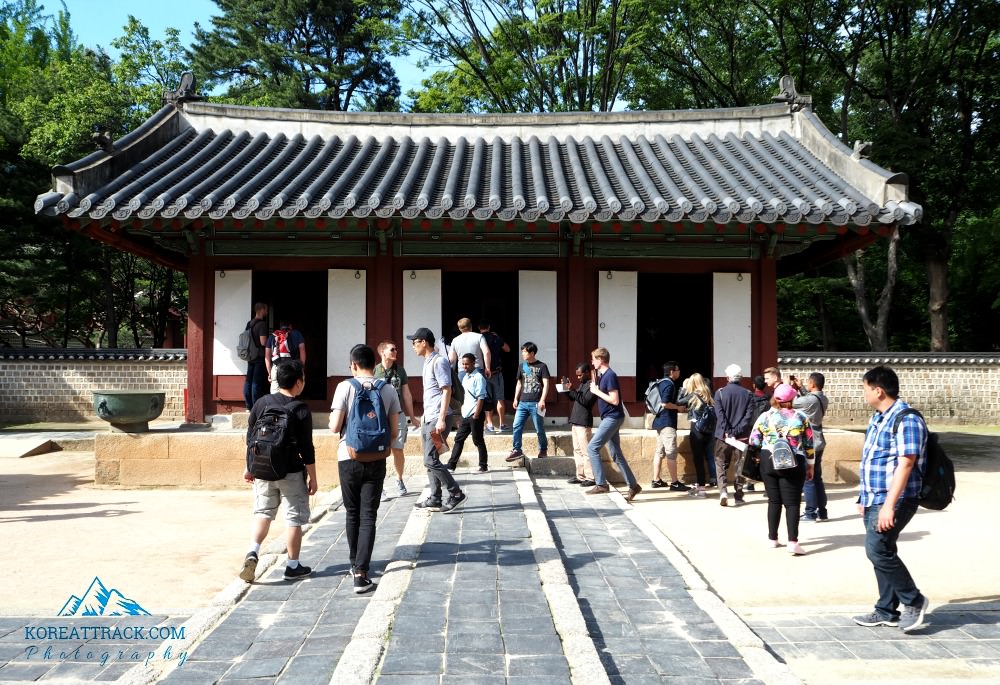 Jaegung Area - where the king and prince prepare for the ceremony
Jaegung Area - where the king and prince prepare for the ceremonyJeonsacheong Area
Jeongsacheong Area is a fascinating building with a rich history. During the Joseon Dynasty, it was used as a kitchen where foods were prepared for rituals.
This rectangular building was also the place where ritual vessels and tools were kept in ordinary times. The courtyard of Jeongsacheong is also noteworthy as it retains the stone mortars used for preparing food.
Adjacent to Jeongsacheong, lies Subokbang, the quarters of officials guarding Jongmyo Shrine in Seoul. This area, steeped in historical significance, is a must-visit for those intrigued by the history of the Joseon Dynasty.
Before Subokbang, you'll find raised areas named Chanmakdan and Seongsaengwi, both playing crucial roles in the ritual process.
Chanmakdan was the final checkpoint for food, ensuring its preparation was correct for the ritual. Seongsaengwi, on the other hand, was where animals were examined before sacrifice, a significant step in the ritual process.
Seongsaengwi, on the other hand, is where animals such as cows, sheep, and pigs were examined before being sacrificed. This area played a significant role in the ritual process, and the animals were carefully chosen to ensure they were fit for sacrifice.
To the east of Jeongsacheong is Jejeong, which is well-used for rituals. This well had a special significance in the ritual process, and its water was considered sacred. It was used to wash hands and rinse the mouth before the ritual.
Overall, Jeongsacheong, Subokbang, Chanmakdan, Seongsaengwi, and Jejeong are significant historical sites worth visiting. They offer a glimpse into the rich history of the Joseon Dynasty and the importance of rituals in their culture.
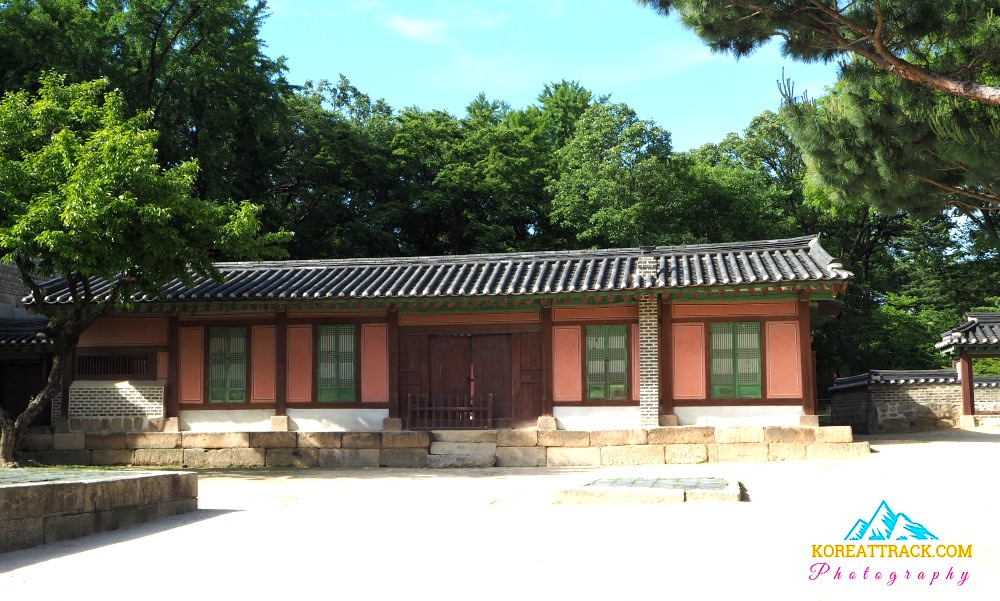 Subokbang (guardhouse)
Subokbang (guardhouse)Hall of Eternal Peace
Yeongnyeongjeon, also known as the Hall of Eternal Peace, is a magnificent addition to the Jeongjeon building at Jongmyo Shrine in Seoul, South Korea.
The construction of Yeongnyeongjeon was necessary as Jeongjeon could no longer accommodate more tablets. The name of the hall represents the desire for both ancestors and descendants of the royal family to live in peace for eternity.
The layout and facilities of Yeongnyeongjeon are similar to those of Jeongjeon, but they are smaller and more intimate. The enclosed woldae, or two-tiered elevated stone yard, is surrounded by walls, and three gates can be found in the east, south, and west.
When it was first built, Yeongnyeongjeon had six spirit chambers. However, it was eventually expanded to 16 spirit chambers, which is how it appears today.
Unlike the roof of Jeongjeon, which emphasizes the long horizontal line, the center section of the roof of Yeongnyeongjeon is elevated. This unique feature is what sets Yeongnyeongjeon apart from Jeongjeon.
Underneath this raised section, you will find four spirit chambers for ancestors of the preceding four generations of King Taejo, who founded the Joseon Dynasty.
Furthermore, a storage room for ritual equipment was built towards the east, and Akgongcheong, the Musician's Dressing Room, was built outside the southwest wall. The elegance and intricacy of the architecture in Yeongnyeongjeon are a testament to the rich history and culture of South Korea.
Overall, Yeongnyeongjeon is a beautiful and peaceful hall that holds a significant place in the hearts of South Koreans. It is a must-visit destination for anyone who wants to experience the country's rich history and culture.
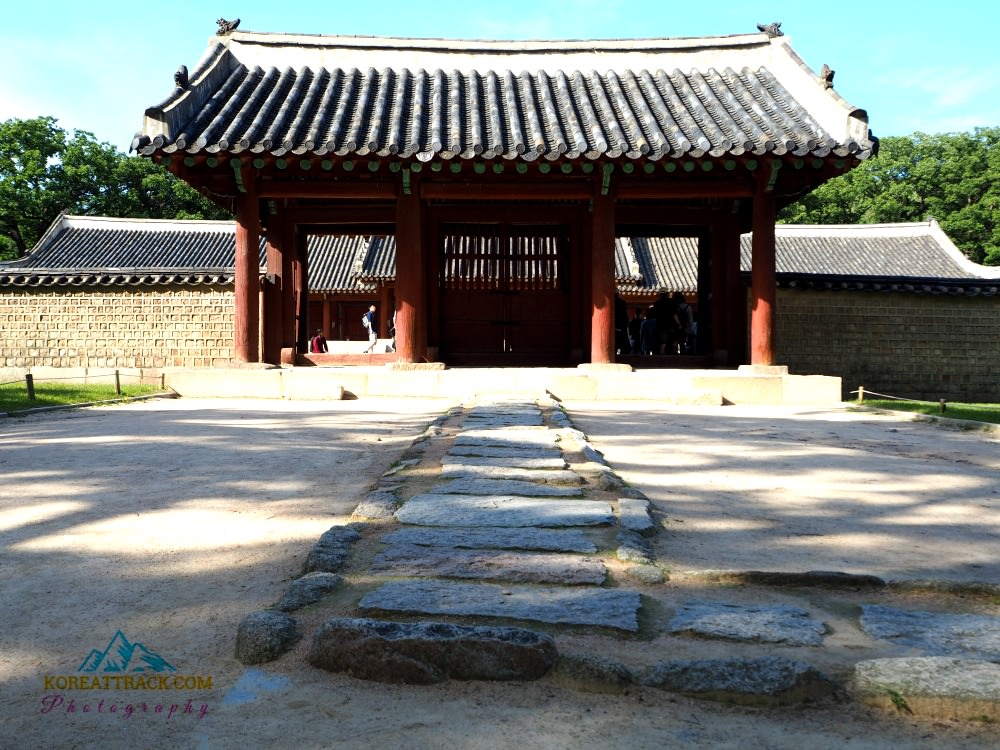 'Hall of Eternal Peace'
'Hall of Eternal Peace'UNESCO World Heritage Shrine
UNESCO World Heritage Shrine
Chonmyo Shrine has received international recognition by inclusion on the UNESCO Wolrd Heritage List, which was established by the Convention Concerning the Protection of the World Cultural and Natural Heritage.
Properties chosen for this list must have invaluable and distinctive features which deserve special protection for the benefit of all humanity.
Chongmyo Shrine was built in the fourth year of King Taejo of the Choson Dynasty (1392-1910) and embodies Confucian ideals. Since its construction, annual rites have been offered before the ancestral tablets of the kings and queens of the Choson royal family.
Date of Registration: December 9, 1995.
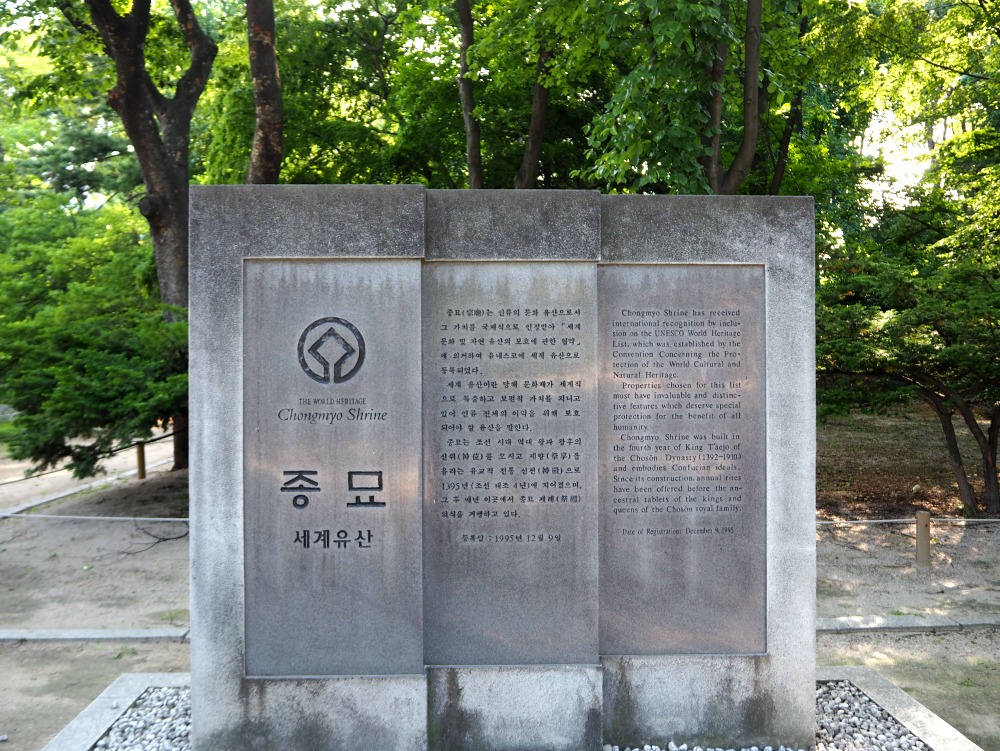 UNESCO World Heritage Shrine
UNESCO World Heritage ShrineJongmyojeongyo Bridge
Jongmyojeongyo, which means "bridge leading to the royal ancestral shrine" in English, is a historic bridge built to cross the Hoedong Jesaengdongcheon stream in the capital city of the Joseon Dynasty. The stream runs by the entrance of the Royal Ancestral Shrine (Jongmyo), linking the Hoe-dong and Jesaeong-dong districts.
Originally a wooden bridge, Jongmyojeongyo was built with stone during the reign of King Sejong (r. 1418-1450) in 1421. This bridge was a vital part of the city's infrastructure for the Joseon rulers, as they needed to use it whenever they attended significant state events held at the shrine, including the annual memorial rites honoring the royal ancestors of Joseon.
The bridge spans 6.9 meters in length and is 9.6 meters wide. Its simple beam structure divides it into three lanes. The middle lane is slightly raised to signify a royal lane. The newel posts located at both ends of its abutments are decorated with sculptures of a mythical beast called a haetae.
Jongmyojeongyo was renovated in 1663, and the bridge has endured time and natural disasters ever since. This iconic structure is an integral part of Korea's cultural heritage and a testament to the skill and ingenuity of the Joseon Dynasty's architects and builders. Visitors can still walk across the bridge and admire its remarkable beauty and historical significance.
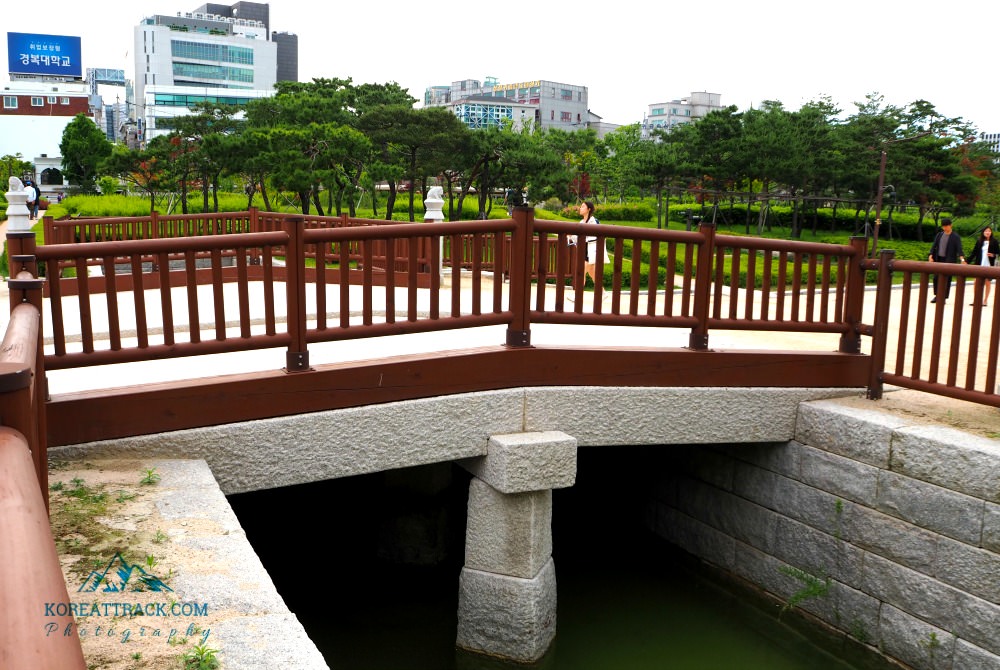 Jongmyojeongyo Bridge, Seoul Jongmyo Shrine
Jongmyojeongyo Bridge, Seoul Jongmyo ShrineHamabi (Jongmyo Dismount Marker)
Hamabi is a term used to describe a series of stones placed around the entrances to the most important state institutions during the Joseon Dynasty. These institutions include the royal ancestral shrine and the royal palaces. The purpose of the stones was to command respect from visitors and passersby by requiring them to dismount from their horses.
Initially, the markers were wooden signs posted at the entrances to the royal ancestral shrine and the royal palaces in 1413. However, these were later replaced by stone markers in 1663 when the Jongmyongjeongyo Bridge, which leads to the royal ancestral shrine, was renovated.
The name of the markers originated from the text engraved on the front surface, which reads: “All officials, whatever their rank, are required to dismount from their horses…”
As time passed, the tradition of dismount markers became more widespread. Gradually, these markers were set up in other places, including the Munmyo Confucian Shrine, the birthplace of great sages and scholar-statesmen.
The dismount markers symbolized respect and reverence for the institutions and people they represented. They showed that the people of Joseon valued tradition, hierarchy, and order. Today, these markers serve as a reminder of Korea's rich cultural heritage and the importance of respecting its past.
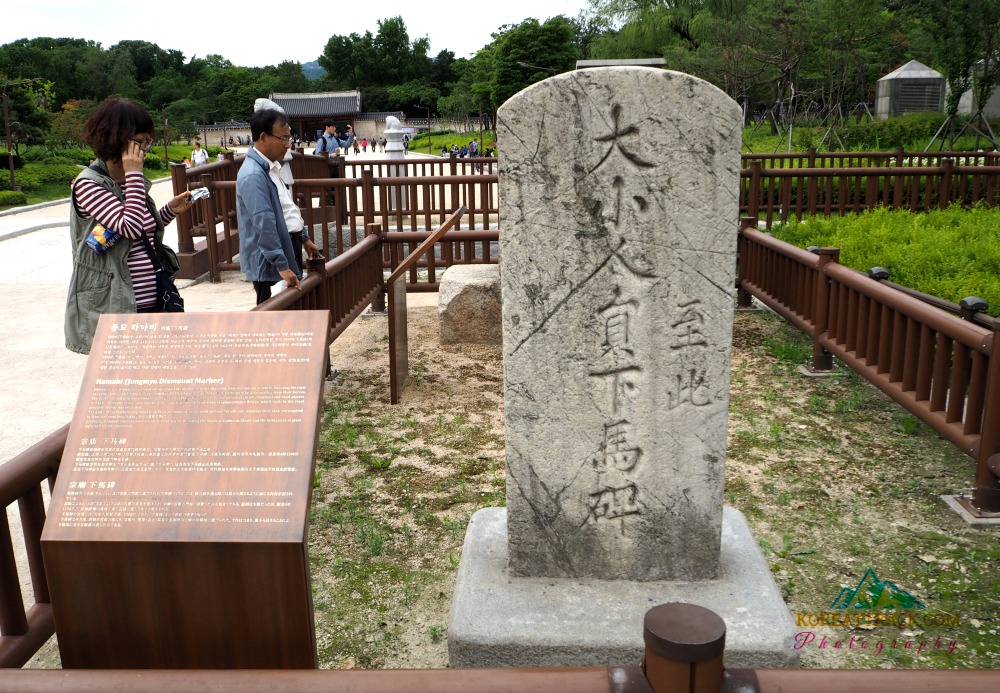 Hamabi - a dismount marker at Seoul Jongmyo Shrine
Hamabi - a dismount marker at Seoul Jongmyo ShrineAngbuilgu (Hemispherical Sundial) Pedestal
Angbuilgu (Hemispherical Sundial) Pedestal
Angbuilgu is a fascinating piece of history that dates back to the Joseon Dynasty, which lasted from 1392 to 1910. "Angbuilgu" refers to a hemispherical sundial used in ancient times to tell time.
The sundial was named after its resemblance to a "cast iron pot that looks up into the sky" in Korean, which is "Angbu" in the local language.
The sundial was first installed near the entrance of Jongmyo Shrine in Seoul in 1434, during the 16th year of the reign of Sejong, a highly revered king in Korean history.
Sadly, during the Japanese Invasions of Korea in 1592, the main body went missing, and only the pedestal remained. The pedestal was often referred to as "Iryeongdae."
In 1898, during the second year of Gwangmu, streetcar tracks were built, and the pedestal was buried below ground. However, it was later excavated and moved to Tapgol Park in 1930, where it was put on display for the public.
With the rearrangement of Jongmyo Plaza in 2015, extensive historical research was conducted, and it was decided that the Angbuilgu pedestal should be relocated back to its original location near the entrance of Jongmyo Shrine.
Today, the Angbuilgu pedestal stands and attests to Korea's rich cultural heritage and serves as a reminder of the country's glorious past.
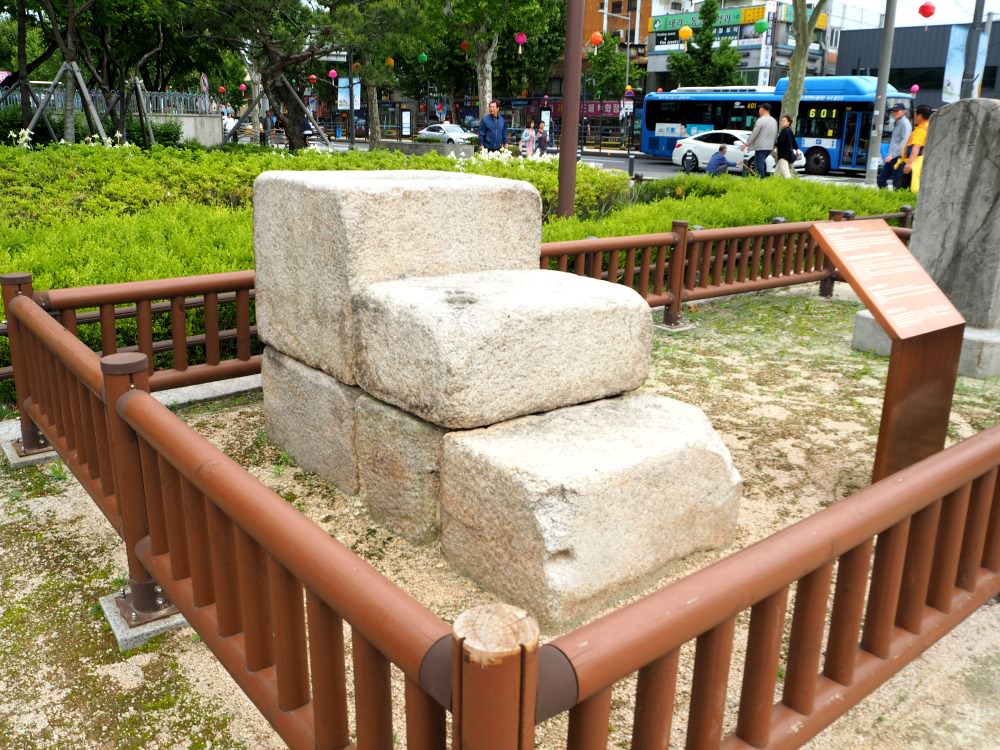 Pedestal of a sundial ('Angbuilgu')at Jongmyo Shrine in Seoul, South Korea
Pedestal of a sundial ('Angbuilgu')at Jongmyo Shrine in Seoul, South KoreaWhere To Go From Here
As you exit Jongmyo Shrine in Seoul from the main entrance, you will find yourself in Jongmyo Park, a spacious area planted with some trees, flowers, and some sitting areas where you can relax after your tour inside the shrine.
From here, you can proceed to any popular place as it is located right where great attractions are located.
For example, you can head for the westward directions to the palaces of...
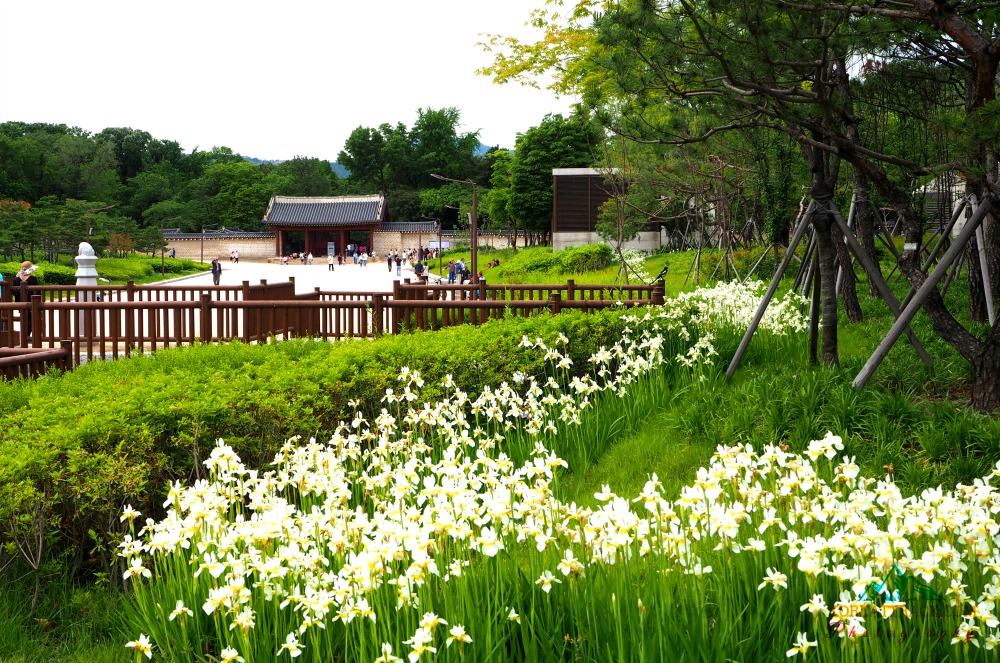 Jongmyo's flowers by the bridge area
Jongmyo's flowers by the bridge areaOther popular places nearby…
- Tapgol Park (ancient Pagoda, freedom park, old temple site, and relics)
- Jong-ro Underground Shopping Center
- Musical Instrument Shopping Center (Nakwon)
- Jong-ro Jewelry Stores and Watch (repair) Shops
- Jogyesa Temple
- Gwanghwamun Area
- Bookstores (Kyobo Bookstore)
- Seoul City Hall Square
- Hotels in Seoul
public facilities
Guided Tour in English: 10:00, 12:00, 14:00, 16:00
Facilities: Wheelchair rental, wheelchair ramps (Jeongjeon Hall, Education & Promotion Hall, Yeongnyeongjeon Hall), restrooms, elevators
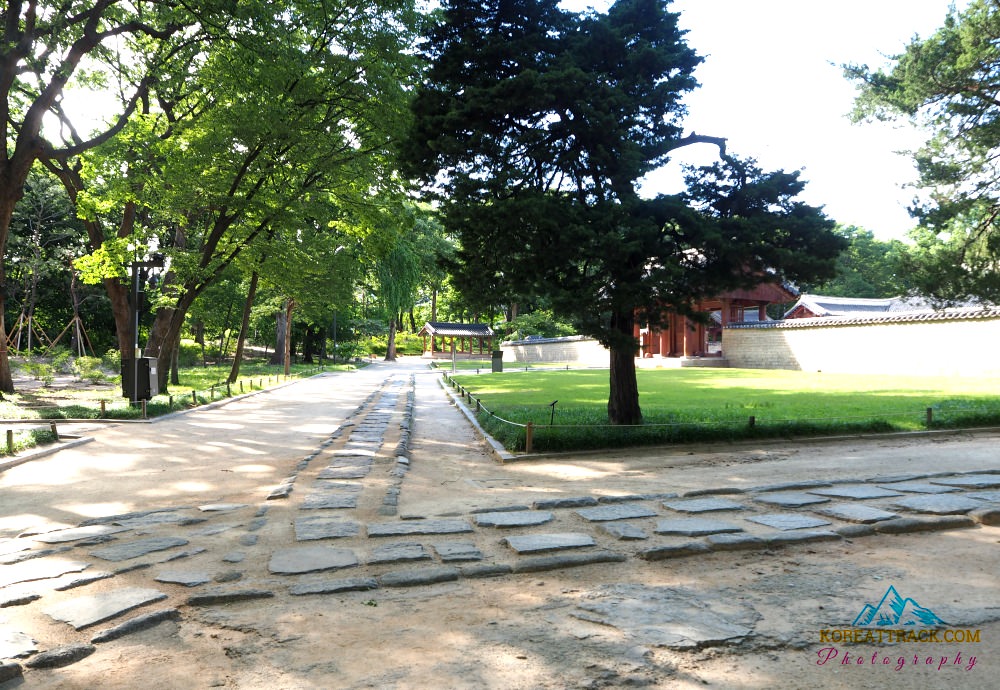 Footpath for kings only
Footpath for kings onlyGetting to Jongmyo Shrine
Jongno-3ga.
This is your direction when you are heading to Seoul Jongmyo Shrine, and you cannot miss it. Seoul Subway Line 1, 3, 5 run at Jong-no 3ga Station. Go to Exit 11.
Buses (regular city bus and intercity buses frequently travel Jongro road.
Bus: 111, 201, 260, 262, 270, 271, 721, N15, N62 or 9301 and get off at Jongno 4(sa)-ga.Jongmyo Shrine Bus Stop.
Resource: www.tour.jongno.go.kr (Korean, English, Japanese, Chinese)
Please, let me know should you have questions or need special guidance related to this site.
Thanks and enjoy your travels!
- Home
- Korean UNESCO Heritage Sites
- Jongmyo Shrine In Seoul
Hotel Booking Guide
Find affordable and amazing hotels on Agoda.com using the search box below. Book now to enjoy great discounts and save!
Get Exciting Activities
Experience the thrill of a lifetime by booking one of our exciting activities today! Take advantage of this opportunity and secure your spot in advance.
Hotel Map Guide
Find your affordable, accessible, and comfortable hotel in Seoul at Agoda.Com. See the hotel map below...
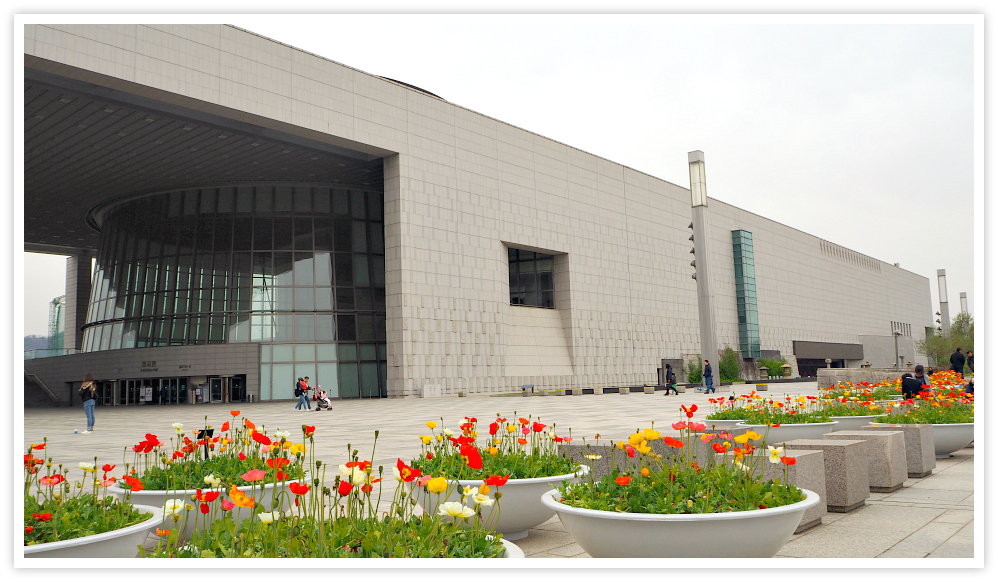

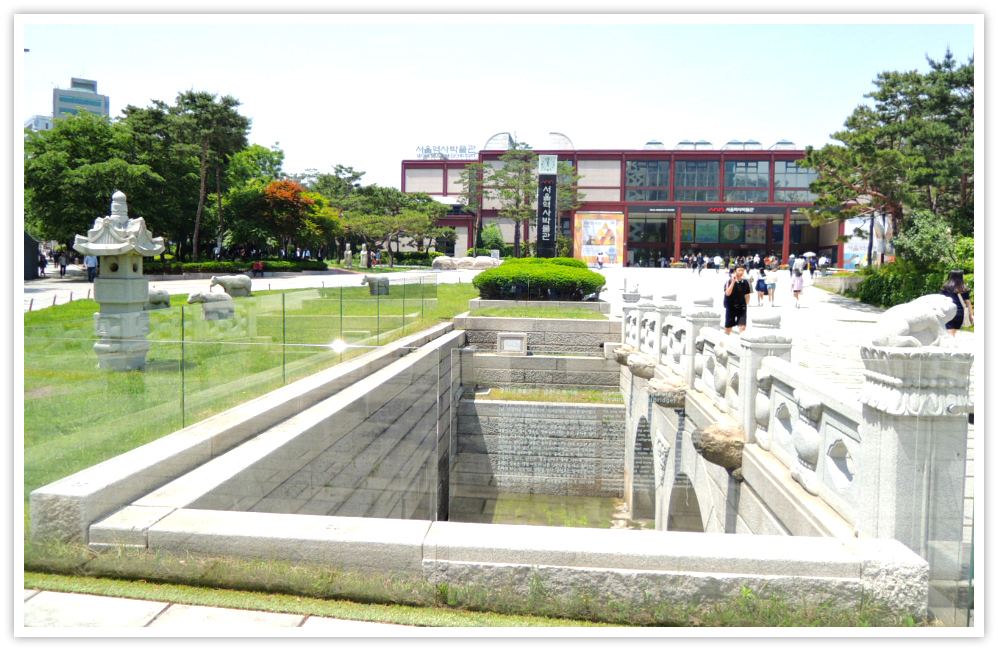
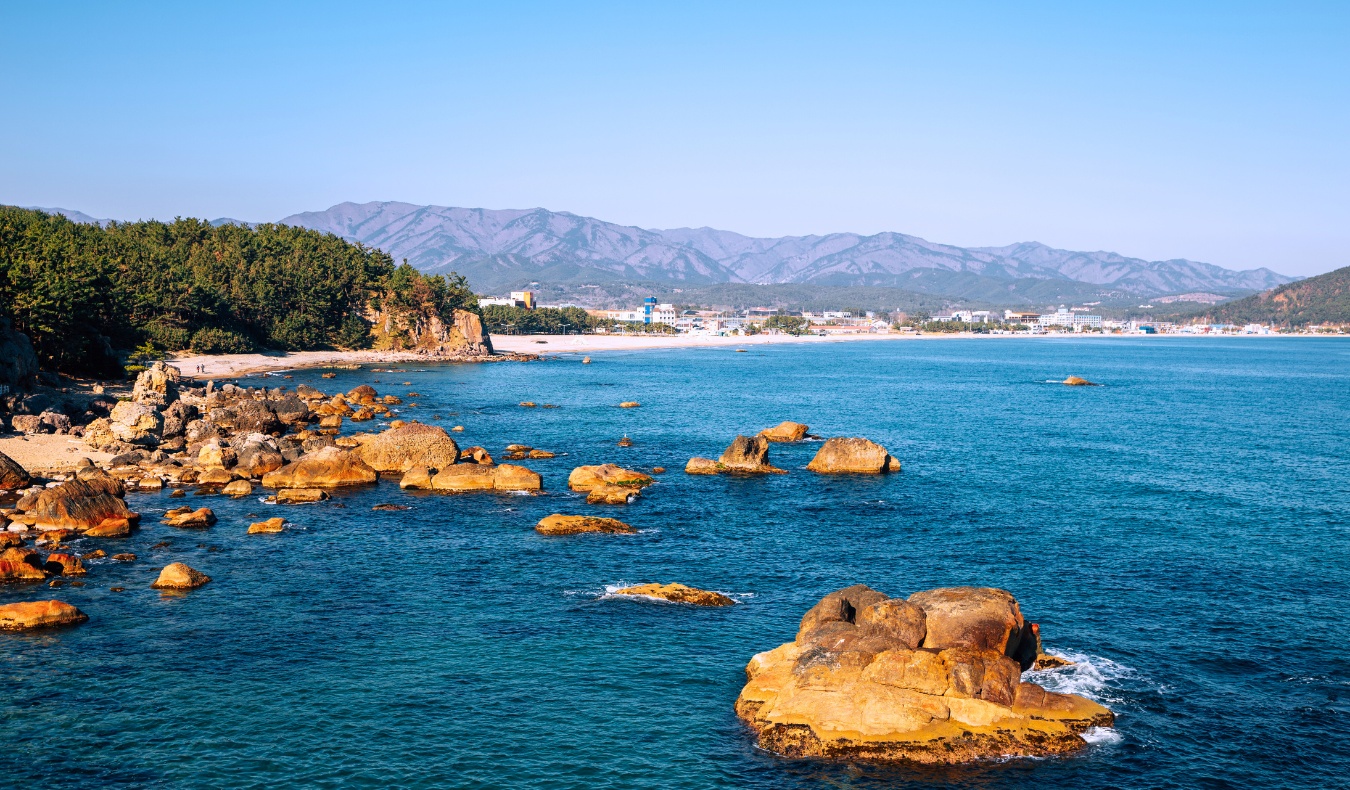
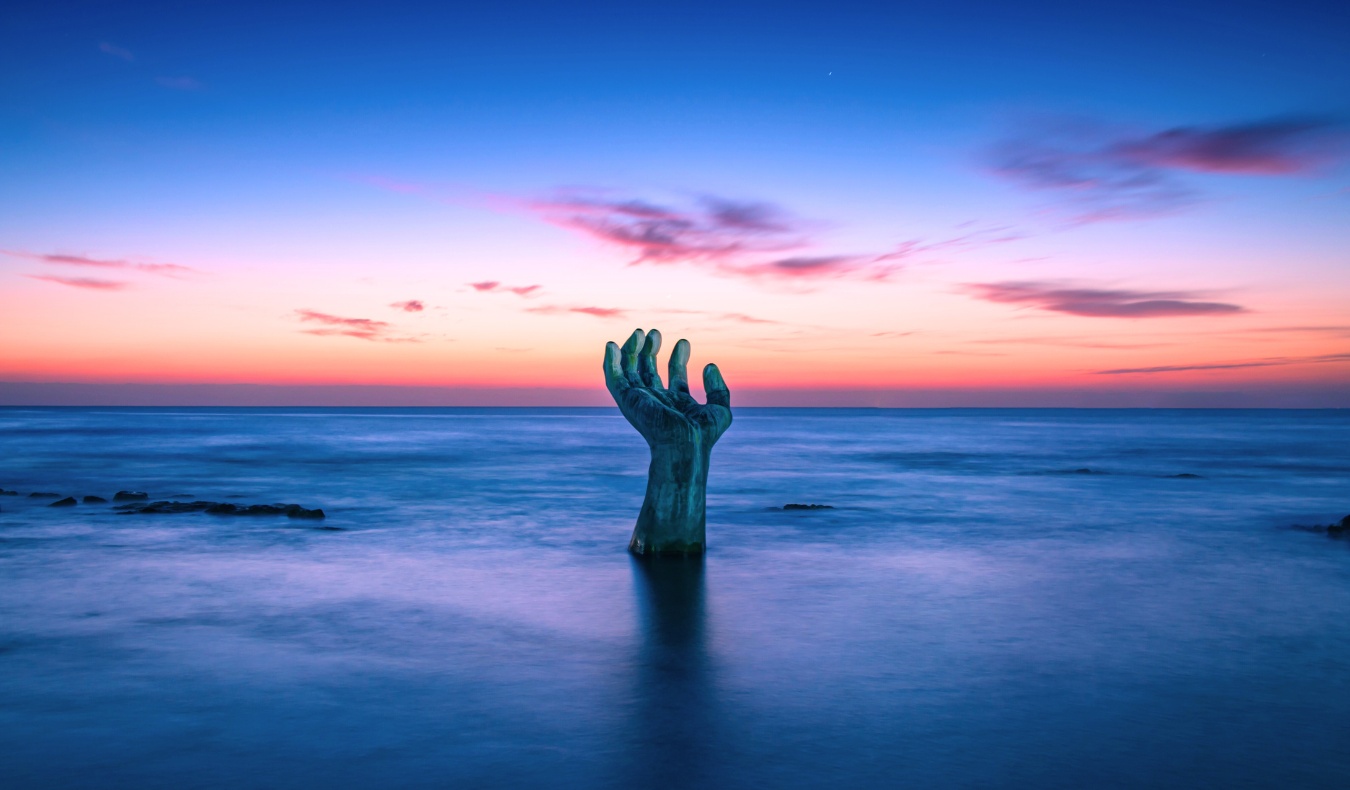
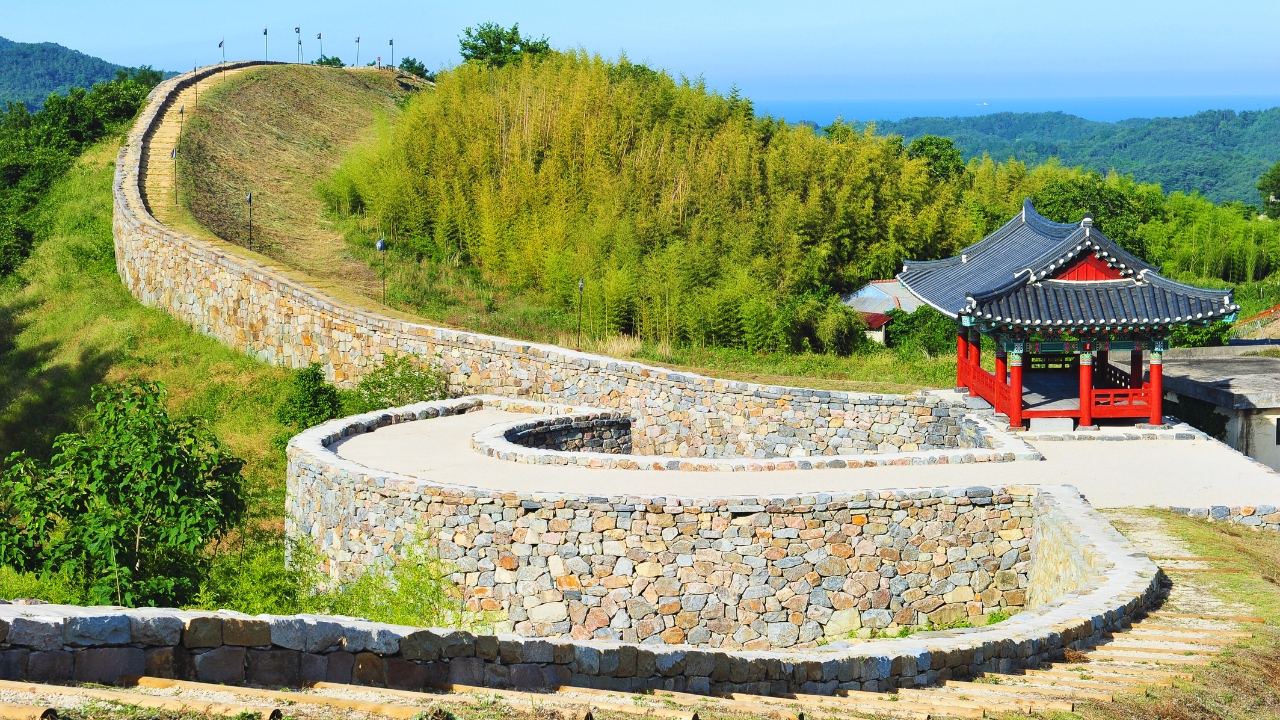

New! Comments
What do you think about this page? Leave me a comment in the box below.